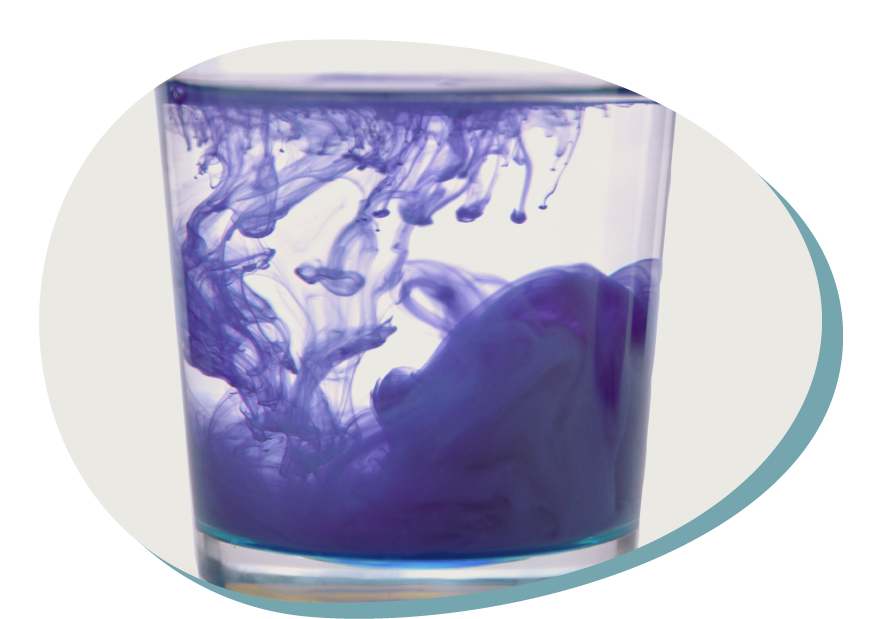Disappearing ink – investigating the process of diffusion
Type of resource: You Tube
Web address https://www.youtube.com/watch?v=U8K-YDZLME8
Language: English
Description
Observing the process of diffusion of ink in the hot and col water, investigating the qualities of diffusion in different liquids.
Scientific concept introduced
Diffusion, mixing, permeation (infiltration), dissolving.
Creative and critical thinking
Creative thinking – curiosity
Mathematical reasoning
Mathematical thinking – measuring ingredients
Scientific thinking
Observing, asking questions, predicting (formulating hypotheses), analyzing, drawing conclusions
Learning how to learn
Cognitive curiosity, motivation and engagement, independence in learning, reflexive learning
Additional
Fine motor skills,Teamwork – sharing responsibility for a common task, Language competence – enriching vocabulary, interpersonal communication
Disappearing ink – investigating the process of diffusion
Overall aims
– investigating the qualities of ink and vinegar,
– Introducing the concept of diffusion,
– rozwijanie umiejętności krytycznego i logicznego myślenia, rozumowania, argumentowania i wnioskowania,
– rozwijanie kreatywności i pomysłowości dzieci,
– rozwijanie umiejętności manualnych,
– doskonalenie umiejętności odmierzania składników
Vocabulary – keywords should be understood
diffusion, mixing, permeation (infiltration), dissolving
Expected learning outcomes (operational aims)
– explain the process of diffusion;
– measure precisely the necessary ingredients;
– conduct the experiment independently following teacher’s instructions;
– observe and draw conclusions
STEM skills – to which the learning unit is related to
CORE STEM SKILLS
Scientific thinking: observing, asking questions, predicting (formulating hypotheses), analyzing, drawing conclusions
Creative thinking
Mathematical thinking – measuring ingredients
Learning how to learn – cognitive curiosity, motivation and engagement, independence in learning
ADDITIONAL SKILLS
Fine motor skills,
Teamwork – sharing responsibility for a common task
Language competence – enriching vocabulary, interpersonal communication
Teaching methodologies/activity outline
1. Introduction – Building problem situation – presenting the materials to children with the question: What could we do with these? What kind of experiment can we conduct using such ingredients?
2. Formulating hypotheses
3. Verifying hypotheses – Conducting experiment 1, following the instruction:
– Divide children into teams
– Prepare 2 empty glasses – pour cold water into one glass, and hot water into the second glass
– Add 5 drops of ink to every glass and mix. Observe the results.
4. Summarizing experiment – drawing conclusions:
– Questions: What can you observe? What happened with the ink in hot water? What happened with the ink in cold water and why?
– Explanation: introducing the concept of diffusion
4. Experiment 2 – Research question: What will happen if now we add vinegar to both glasses?
– Formulating hypotheses
– Verifying hypotheses – add 1 tablespoon of vinegar first to the glass with warm water and observe (the substance becomes blue again as if the ink appeared again).
– Add 1 spoon of vinegar to the glass with cold water and observe (now in both glasses the color is the same)
5. Summarizing the experiment 2 – drawing conclusions: Question: What happened in the glass with hot water and why? How can we explain this process?
6. Experiment 3 – ink and oil.
Research question: What shall happen if we use oil instead of water? Will the ink disappear?
Formulating hypotheses
7. Verifying hypotheses – conducting experiment:
– Add 5 drops of ink to the glass with cold oil. Observe – what happened and why? Why did the ink not dissolve? (we can see drops of ink floating in the oil)
– Add 5 drops of ink to the warm oil and observe. What happened? Try to mix both substances again carefully
– Add vinegar to both glasses, mix carefully and observe – what happened? How does the ink behave and why?
8. Summarizing the experiment – drawing conclusions:
In warm liquids the diffusion comes faster – temperature is a very important factor.
Assessment of learning
Teacher’s assessment – observing children during activities, asking questions during experiments
Equipment and materials to be used in learning unit (tools, ingredients etc)
glasses, cold water woda, hot water, ink, vinegar, oil, spoon
Kind of setting
Classroom
References – source
Educational movie for a teacher: https://www.youtube.com/watch?v=U8K-YDZLME8
Explanation: https://epodreczniki.pl/a/dyfuzja/D1BQgMqcJ
Diffusion is the net movement of anything (for example, atoms, ions, molecules, energy) from a region of higher concentration to a region of lower concentration. Diffusion is driven by a gradient in concentration – a substance or collection undergoing diffusion spreads out from a point or location at which there is a higher concentration of that substance or collection. The word diffusion derives from the Latin word, diffundere, which means “to spread out.”
The rate of diffusion depends on the temperature.
Disappearing ink – investigating the process of diffusion
1. Usefulness for STEM education – integrating content of different disciplines
Cross-curricular character of the resource

The range of S-T-E-M subjects included

The presentation of possibilities of including artistic activities (STEAM approach)

2. Expected learning outcomes
Consistency (links) with preschool core curriculum

Communicativeness of description

3. Methodology of teaching
Clarity, communicativeness of instructions for teachers

Meaningful learning – using practical life problems

Original idea

The level of ease in implementing the methodology to preschool age children

The level of ease in preparing necessary ingredients, materials and equipment needed

4. Sustainability
Ecological characteristics of materials/ results

Supporting healthy eating habits

Low ecological footprint

Possibilities of inclusion (respecting cultural diversity and food intolerances)

5. Class management
Using differentiated forms of work – individual, team work etc.

Individual work

Team work

Whole group
6. Time management

Short activity (10-15 minutes)

Medium activity (20-30 minutes)

Long activity (1 hour or more)

Very long activity (1 day or more)
PDF: https://www.printfriendly.com/p/g/idifTq

